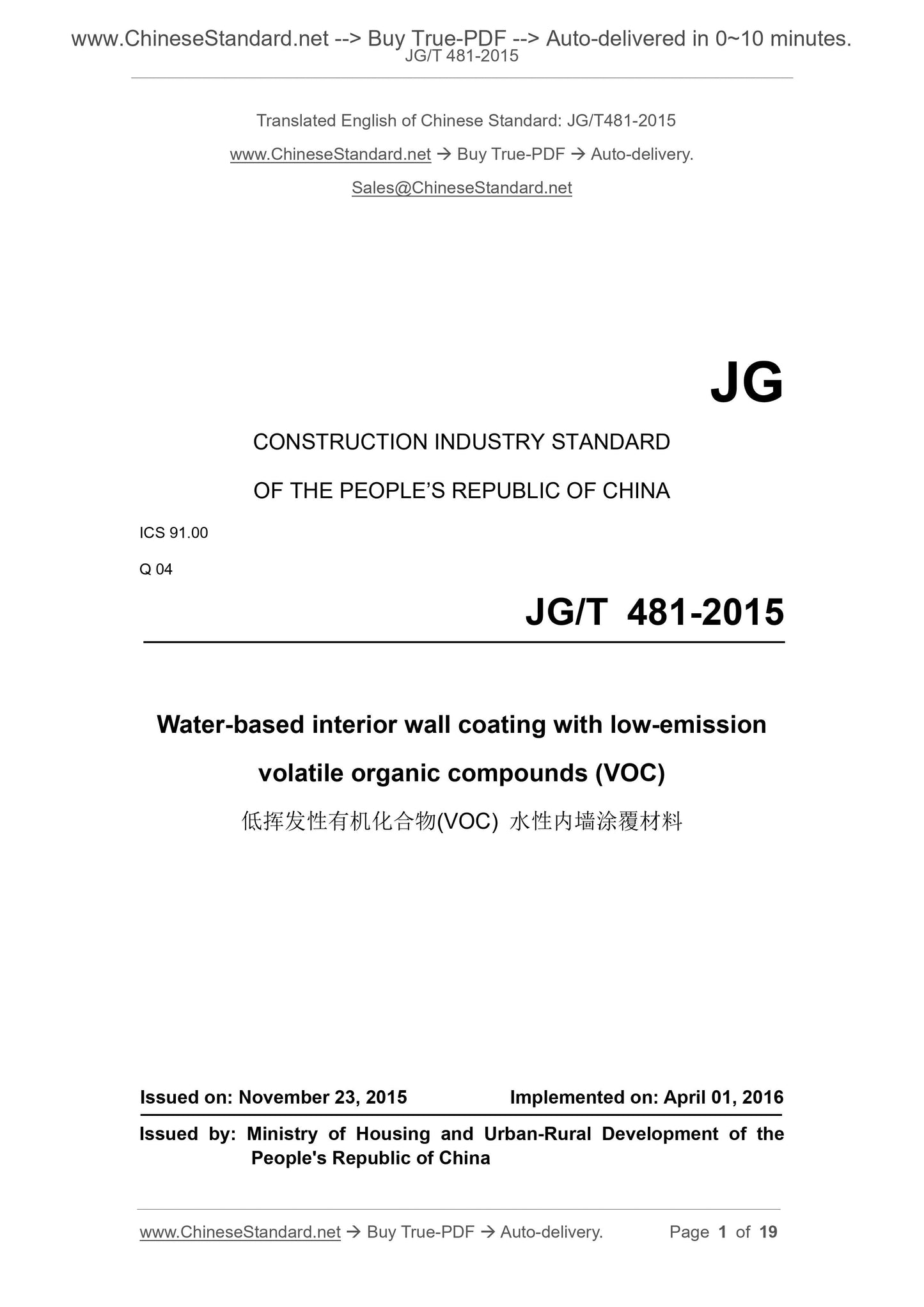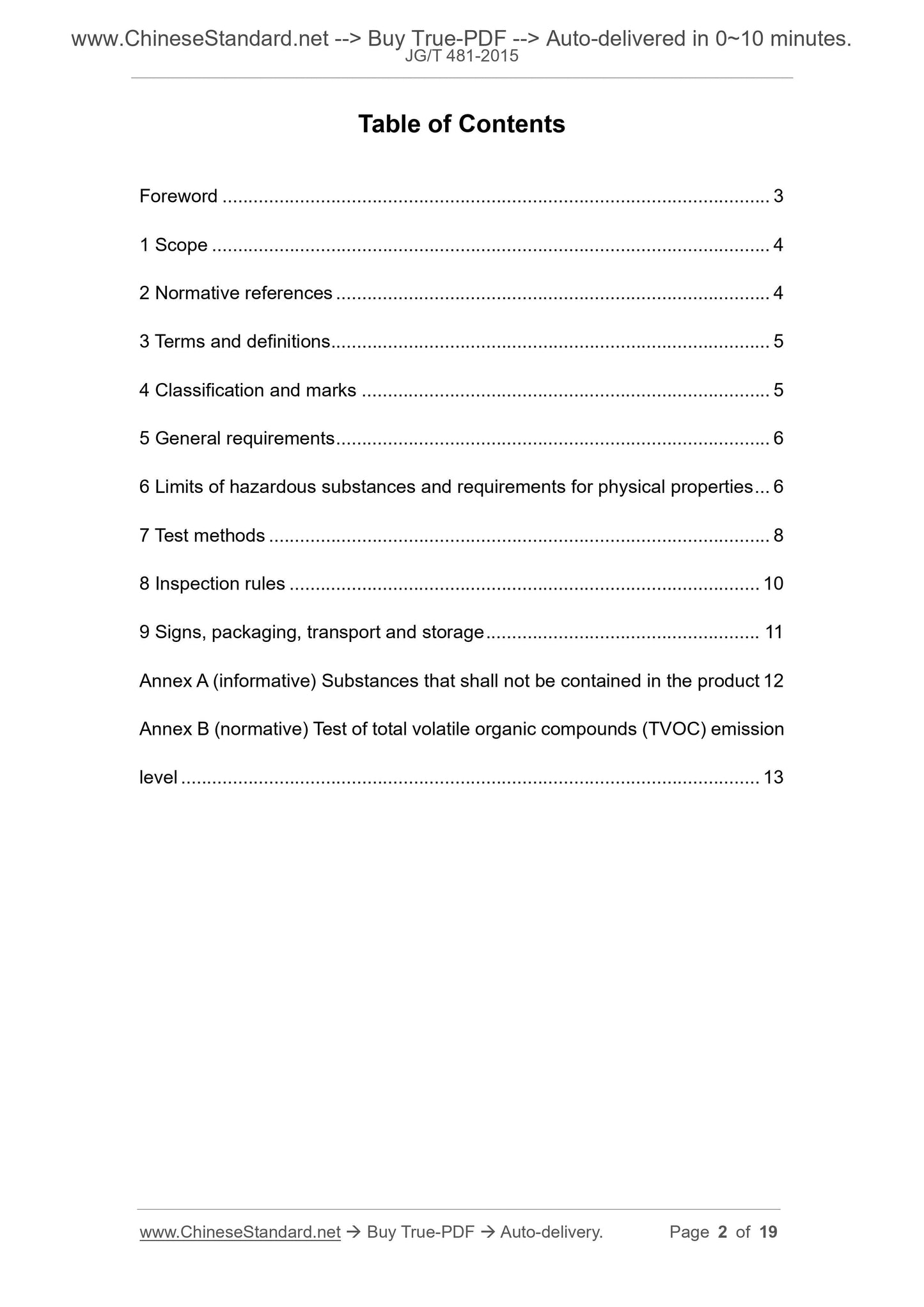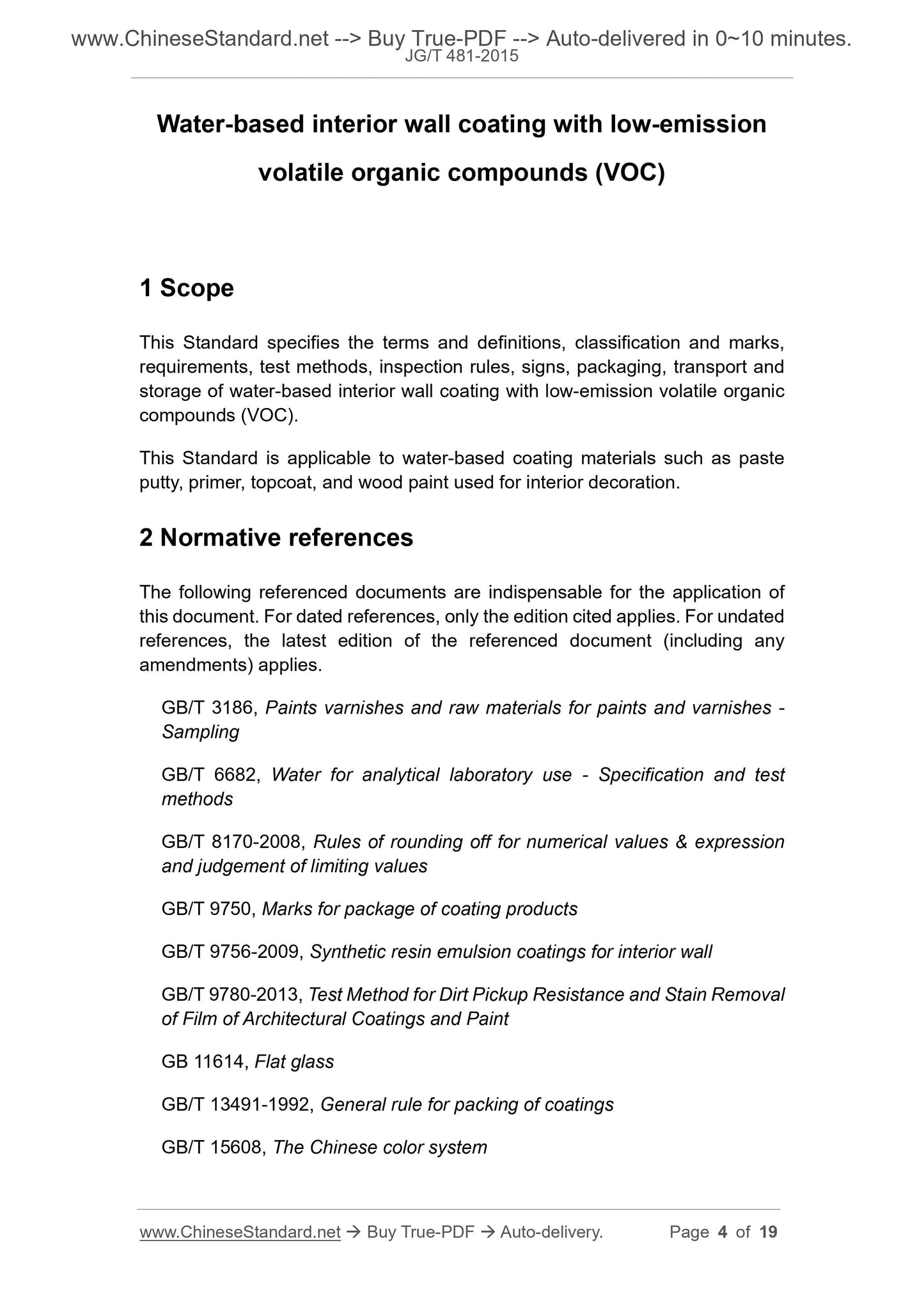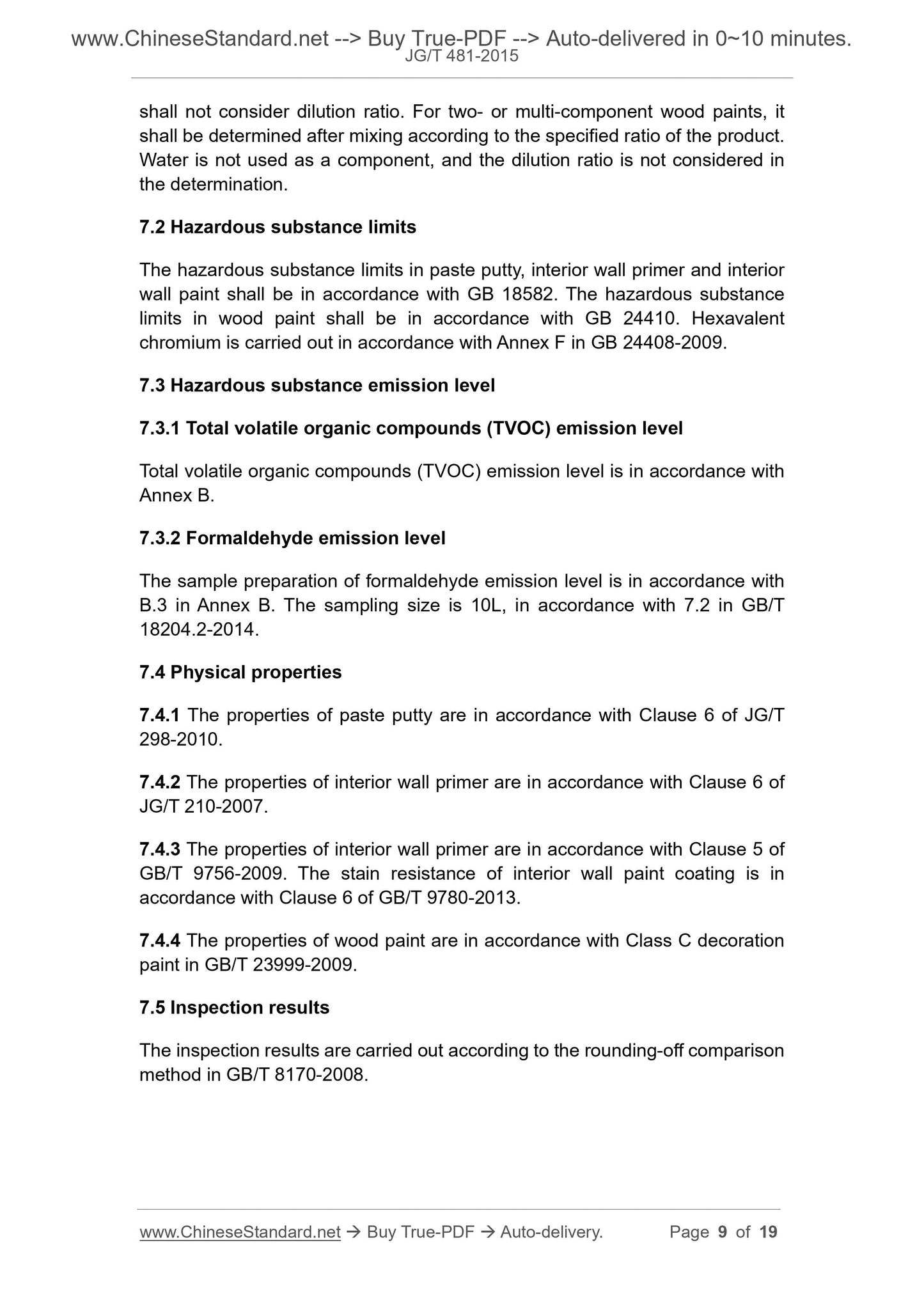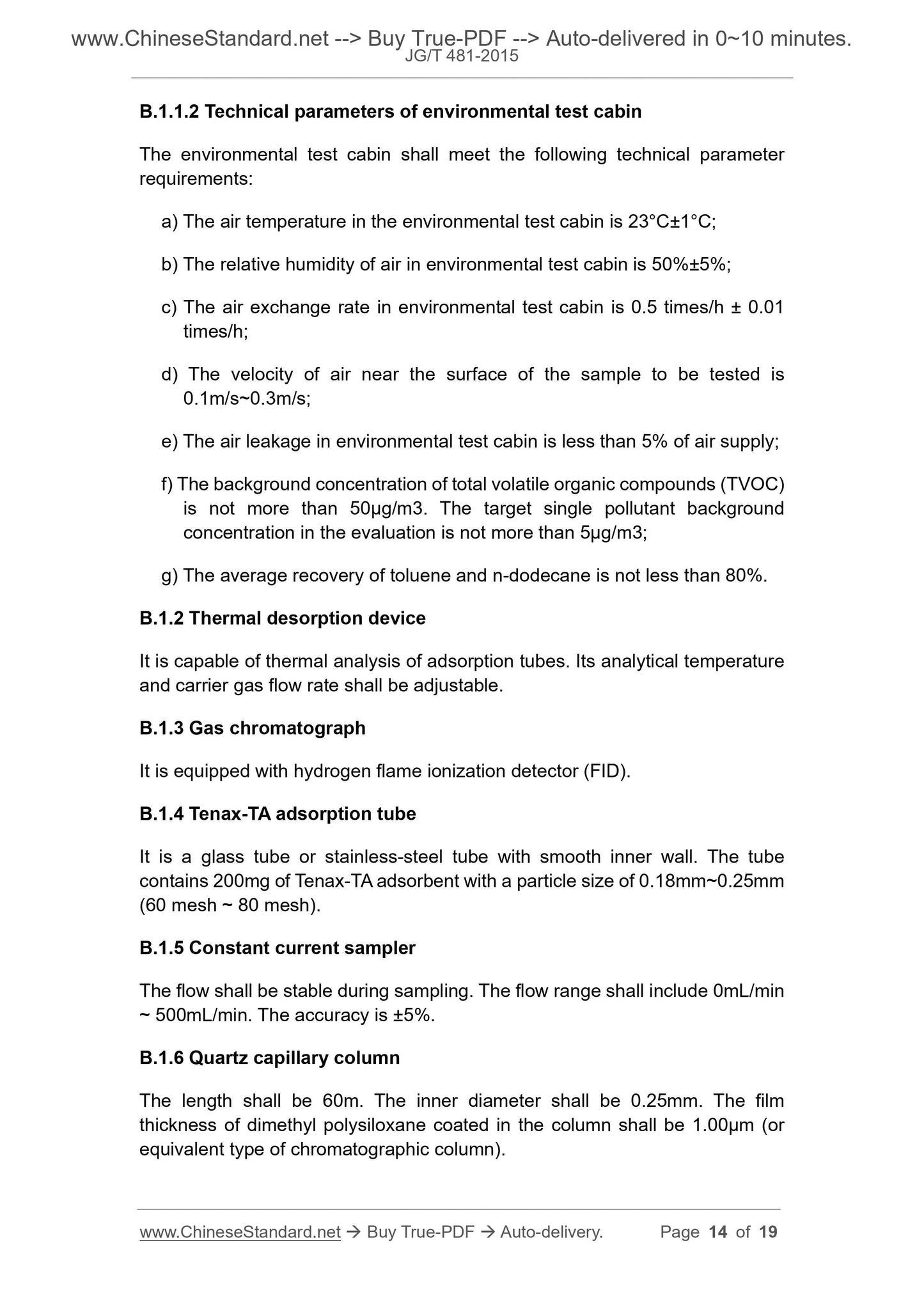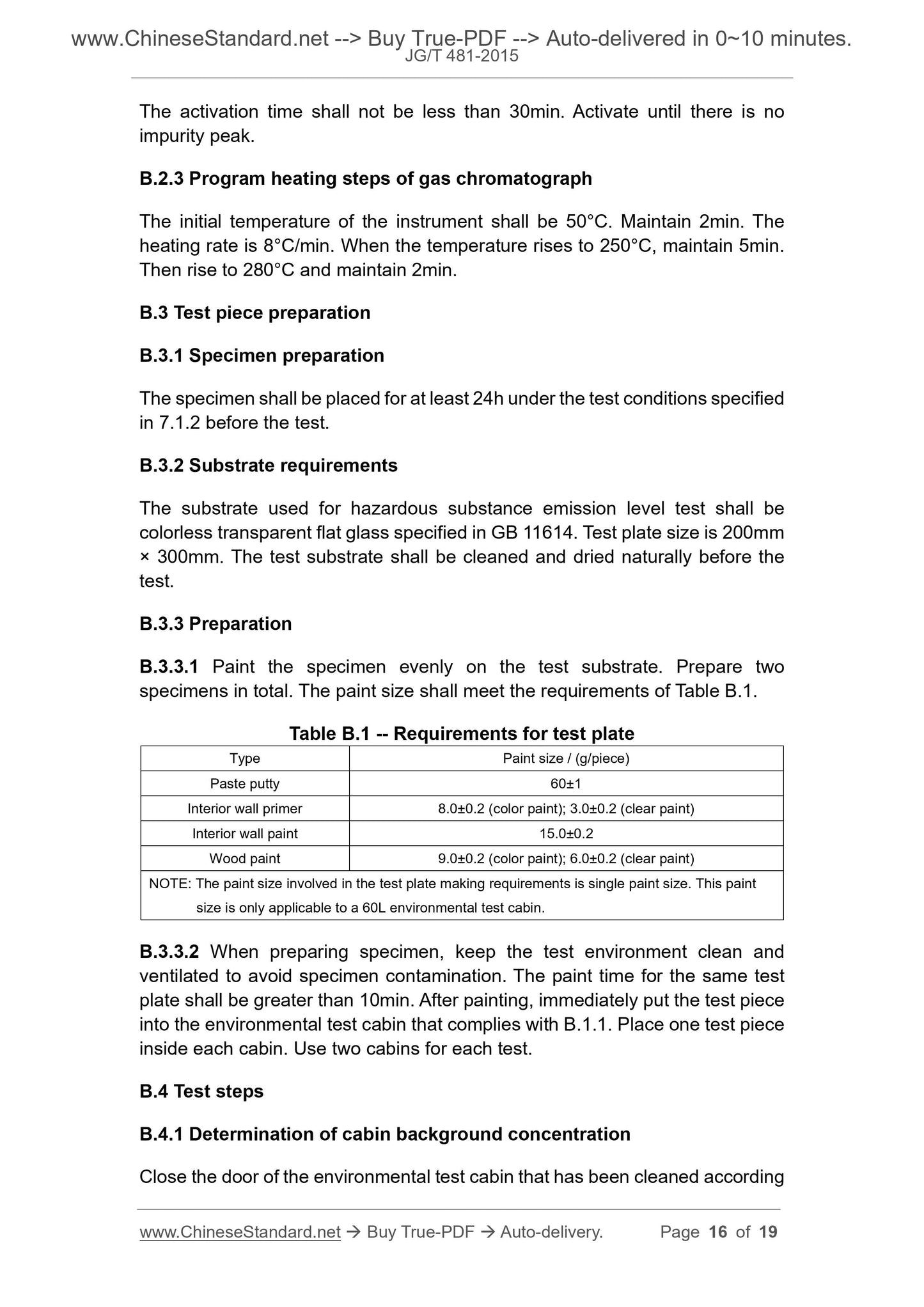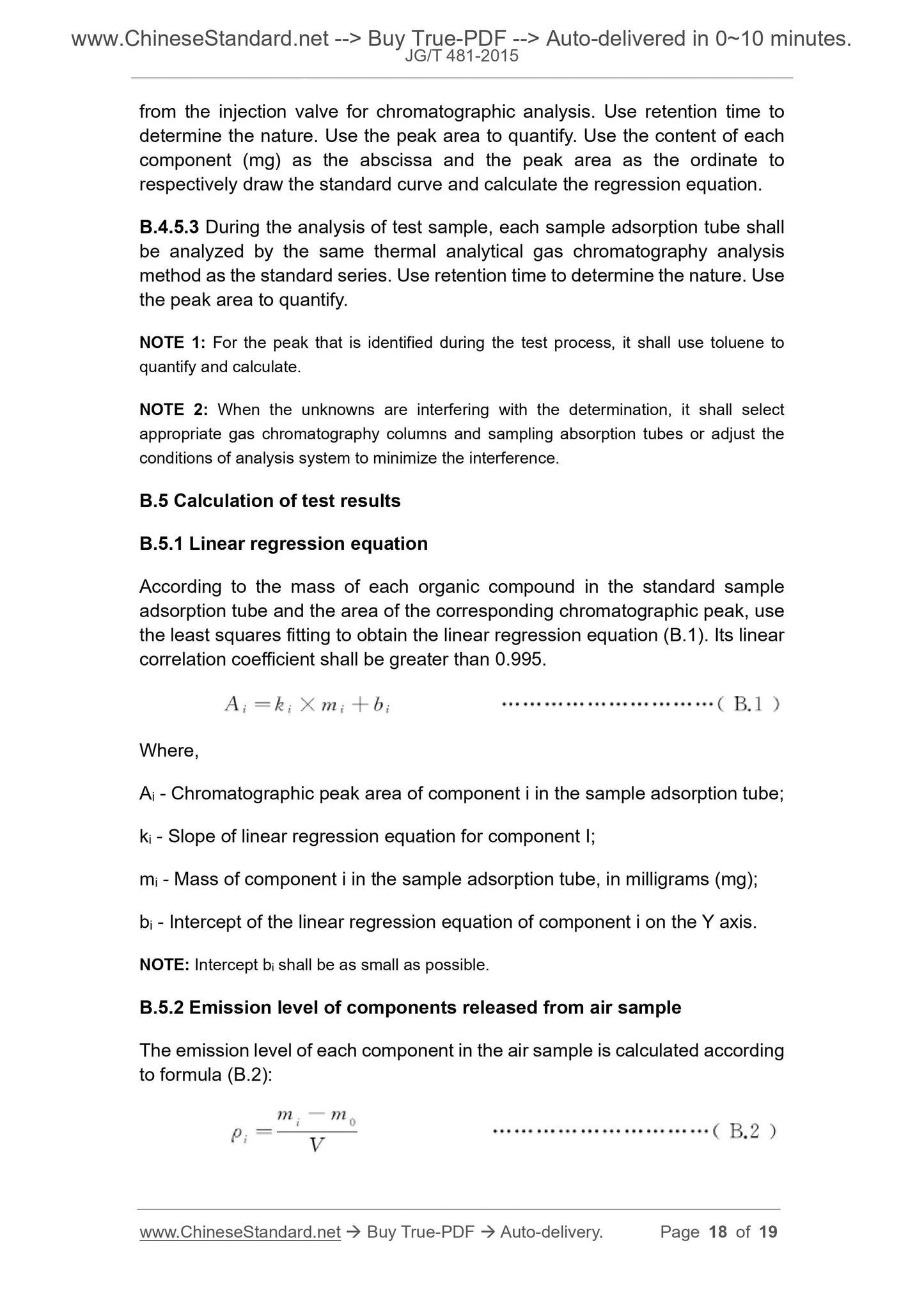1
/
of
7
www.ChineseStandard.us -- Field Test Asia Pte. Ltd.
JG/T 481-2015 English PDF (JG/T481-2015)
JG/T 481-2015 English PDF (JG/T481-2015)
Regular price
$185.00
Regular price
Sale price
$185.00
Unit price
/
per
Shipping calculated at checkout.
Couldn't load pickup availability
JG/T 481-2015: Water-based interior wall coating with low-emission volatile organic compounds (VOC)
Delivery: 9 seconds. Download (and Email) true-PDF + Invoice.Get Quotation: Click JG/T 481-2015 (Self-service in 1-minute)
Newer / historical versions: JG/T 481-2015
Preview True-PDF
Scope
This Standard specifies the terms and definitions, classification and marks,requirements, test methods, inspection rules, signs, packaging, transport and
storage of water-based interior wall coating with low-emission volatile organic
compounds (VOC).
This Standard is applicable to water-based coating materials such as paste
putty, primer, topcoat, and wood paint used for interior decoration.
Basic Data
| Standard ID | JG/T 481-2015 (JG/T481-2015) |
| Description (Translated English) | Water-based interior wall coating with low-emission volatile organic compounds (VOC) |
| Sector / Industry | Building and Construction Industry Standard (Recommended) |
| Classification of Chinese Standard | Q04 |
| Classification of International Standard | 91 |
| Word Count Estimation | 15,137 |
| Date of Issue | 2015-11-23 |
| Date of Implementation | 2016-04-01 |
| Regulation (derived from) | Ministry of Housing and Urban?Rural Development Announcement No.962 |
| Issuing agency(ies) | Ministry of Housing and Urban-Rural Development of the People's Republic of China |
Share
